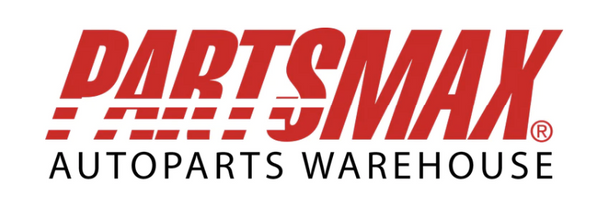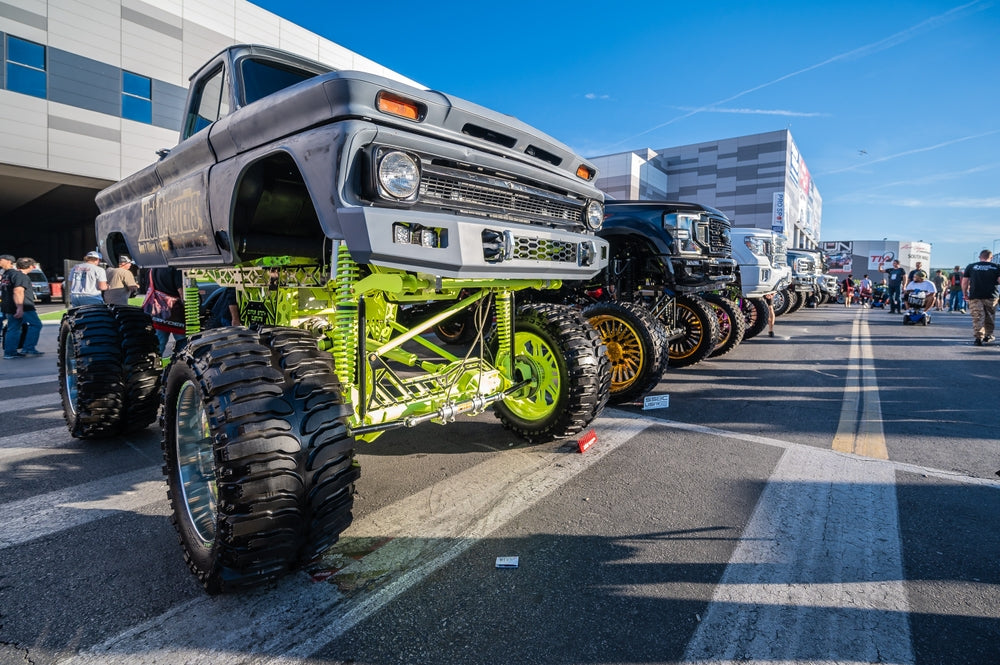Key Takeaways
-
- Vehicle modification laws vary dramatically by state, with California, New York, and Massachusetts having the strictest regulations
- Federal EPA and DOT standards create baseline requirements that all states must follow for emissions and safety
- The three most commonly regulated modifications are exhaust systems, lighting upgrades, and suspension alterations
- Always look for DOT, SAE, or CARB certifications when purchasing aftermarket parts to ensure legal compliance
- Illegal modifications can result in fines, failed inspections, and denied insurance claims
Picture this: you've just installed a new cat-back exhaust system and LED headlights on your ride, and you're cruising down the highway when you see those dreaded flashing lights in your rearview mirror. The question racing through your mind? "Are my aftermarket modifications street legal?" You're not alone. Thousands of automotive enthusiasts face this uncertainty every day, and the answer isn't always straightforward.
Whether you're upgrading your vehicle's performance, appearance, or functionality, understanding the legal landscape is crucial. Vehicle modification laws differ significantly from state to state, and what's perfectly legal in Montana might get you ticketed in California. This comprehensive guide breaks down the regulations you need to know, focusing on the three most commonly modified areas: exhaust systems, lighting, and suspension components.
Understanding Federal vs. State Vehicle Modification Laws
Quick Answer: Federal laws set baseline safety and emissions standards through the EPA and DOT, while individual states can impose stricter regulations based on regional concerns like air quality and public safety.
The regulatory framework for vehicle modifications operates on two levels. Federal agencies—primarily the Environmental Protection Agency (EPA) and Department of Transportation (DOT)—establish minimum requirements that apply nationwide. The EPA's Clean Air Act prohibits tampering with emissions control systems, while the DOT's Federal Motor Vehicle Safety Standards (FMVSS) govern everything from lighting visibility to bumper heights.
States then add their own layer of rules, which often reflect regional priorities. California's strict emissions standards stem from decades of air quality challenges, while states without vehicle inspections tend to have more relaxed enforcement. Understanding this hierarchy helps you navigate the complex world of automotive customization without running afoul of the law.
Exhaust System Modifications: What's Legal in Your State
Federal Exhaust Standards You Must Know
At the federal level, one rule is absolute: removing or tampering with your catalytic converter is illegal everywhere. The EPA considers this a violation of the Clean Air Act, and penalties can be severe—up to $2,500 per vehicle for individuals and $25,000 for repair shops. This applies even in states without emissions testing programs.
Most states also enforce sound level restrictions, typically capping exhaust noise at 95 decibels measured from 20 feet away. However, enforcement varies dramatically. California requires CARB (California Air Resources Board) certification for aftermarket exhaust systems, meaning any replacement part must have an executive order number proving it meets emissions standards.
State-by-State Exhaust Regulations
Strictest States: California, New York, Massachusetts, and Connecticut lead the nation in exhaust regulation enforcement. These states require annual inspections that include emissions testing and visual verification of catalytic converters. In California, your exhaust modification must display a CARB sticker, or you'll fail inspection immediately.
Moderate Enforcement: Texas, Florida, Pennsylvania, and Virginia fall into the middle category. While Texas has a 95 dB limit in certain counties, many areas don't actively enforce sound ordinances unless complaints arise. Florida has no statewide vehicle inspection program, but local noise ordinances still apply, particularly in residential areas.
Minimal Restrictions: Montana, Wyoming, South Dakota, and Mississippi have the most permissive exhaust laws. These states typically lack mandatory vehicle inspection programs, though federal EPA regulations still prohibit catalytic converter removal regardless of state law.

Lighting Modifications: LED, HID, and Color Restrictions
Quick Answer: Aftermarket lighting modifications are legal when they meet DOT standards for brightness, beam pattern, and housing design, though specific color and placement restrictions vary by state.
Headlight and Taillight Upgrade Laws
The legality of LED and HID headlight conversions depends more on the housing than the bulb type. Simply installing an LED bulb into a halogen housing creates glare that blinds oncoming drivers and violates FMVSS 108. Legal conversions require complete retrofit kits with proper projector housings and self-leveling mechanisms.
Color temperature matters too. Most states accept headlights between 3,000K (warm white) and 6,000K (cool white). Anything bluer than 6,000K often gets flagged as non-compliant. As for tinted or smoked light covers, many states prohibit them entirely on headlights and taillights due to reduced visibility.
Underglow and Accent Lighting Rules
Underglow legality is a patchwork across the United States. The universal rule: red and blue lights visible from the front are prohibited in all states because they're reserved for emergency vehicles. Beyond that, some states ban underglow entirely (Michigan, Vermont), while others allow it with color restrictions. Florida permits underglow but prohibits red or blue colors visible from the front. Many states with no specific underglow statutes still have "distraction" laws that officers can apply subjectively.
Suspension Modifications: Height Limits and Lift Regulations
Quick Answer: Suspension lift and lowering modifications are legal within state-specific height restrictions, which typically regulate frame height, bumper height, and ground clearance to maintain vehicle stability and collision safety.
Why States Regulate Suspension Changes
Suspension modifications affect more than just appearance—they impact vehicle dynamics, visibility, and collision safety. When you lift a truck, the headlights aim higher, potentially blinding other drivers. Raised bumpers can override safety structures on other vehicles during accidents. That's why states impose maximum frame and bumper height restrictions.
State Height Restriction Overview
Strict States: California maintains detailed height charts specifying maximum frame heights based on vehicle gross vehicle weight rating (GVWR). Connecticut limits lifts to four inches and enforces specific bumper height maximums. Massachusetts and Hawaii have similarly detailed regulations with active enforcement.
Moderate States: Texas, Florida, North Carolina, and Georgia regulate bumper heights rather than overall lift amounts. In Florida, bumpers can't exceed 22 inches on vehicles under 2,500 pounds and 26 inches on heavier vehicles. These states balance modification freedom with safety concerns.
Permissive States: Montana, Alaska, and South Dakota have minimal or no state-level height restrictions, though local ordinances may still apply in specific municipalities.
Staying Legal While Customizing Your Vehicle
Choose Certified Aftermarket Parts
The easiest way to avoid legal trouble is selecting parts with proper certifications. Look for DOT stamps on lighting components, CARB executive order numbers on California-legal exhaust systems, and SAE (Society of Automotive Engineers) compliance markings. Reputable suppliers clearly label which parts meet federal and state standards.
Beware of "off-road use only" disclaimers. These products don't meet emissions or safety standards for street use, and installing them can void warranties and create liability issues. Quality certified parts might cost more upfront, but they save you from tickets, failed inspections, and potential insurance headaches.
Documentation and Reversible Modifications
Keep receipts and certification documents for all modifications. If you're pulled over or face inspection challenges, proof of compliant parts strengthens your case. Consider keeping modifications reversible—storing OEM components allows you to restore stock configuration for inspections or if you move to a state with stricter laws.
Frequently Asked Questions About Modification Laws
Can Police Pull Me Over Just for Having Modifications?
Yes, if modifications are clearly visible and appear to violate state law. Officers can establish probable cause based on excessive exhaust noise, improperly aimed headlights, illegal light colors, or obviously illegal suspension heights. However, enforcement varies by jurisdiction and officer discretion.
What If I Move States With My Modified Car?
When you register your vehicle in a new state, it must comply with that state's current laws. Many states require inspection upon registration, so modifications legal in your previous state might need reversal or adjustment. Research destination state requirements before relocating to avoid surprises.
Modify Responsibly: Stay Street Legal and Enjoy Your Ride
Understanding whether your aftermarket modifications are street legal doesn't have to be overwhelming. The key is researching your specific state's requirements before making changes, choosing certified components from reputable suppliers, and maintaining proper documentation. While laws vary dramatically across the country, the common thread is safety and emissions compliance.
Remember that vehicle modification regulations exist to protect drivers, pedestrians, and air quality—not to limit your automotive creativity. By staying informed and choosing quality parts that meet legal standards, you can build the custom vehicle of your dreams without legal headaches.
Ready to Customize With Confidence?
At PartsMax, we stock thousands of certified aftermarket auto parts designed to meet federal and state regulations. From DOT-approved lighting to compliant performance upgrades, we help you build your dream vehicle the legal way.
📞 Phone:(305) 691-1313
📍 Visit Us:3401 NW 73rd ST, Miami, FL 33147
🌐 Shop Online: View our complete inventory
Serving South Florida since 1997 with expert guidance and quality parts you can trust.

